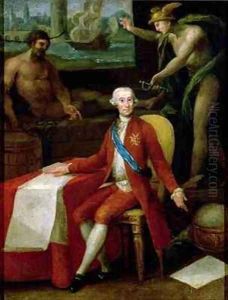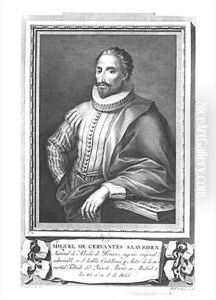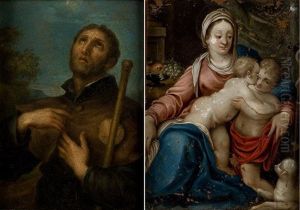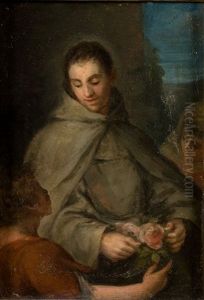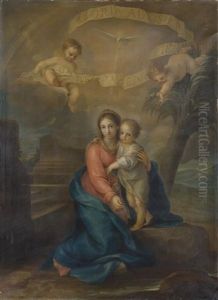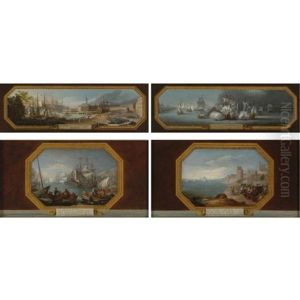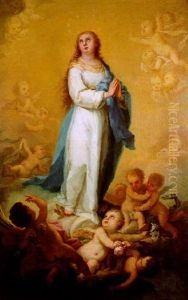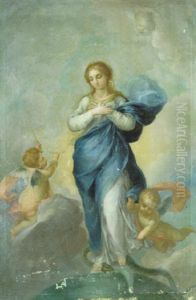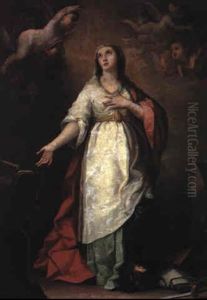Gregorio Ferro Paintings
Gregorio Ferro was a distinguished Spanish painter, born in 1742 in Betanzos, Galicia. His artistic journey began under the tutelage of his uncle, the painter Andrés del Castillo, marking the onset of a prolific career that was largely influenced by the neoclassical movement, a dominant art style of the late 18th and early 19th centuries that sought to revive the ideals of ancient Greek and Roman art.
Ferro's talent and dedication to his craft earned him a scholarship to study in Rome, a city that was, at the time, the epicenter of artistic innovation and classical antiquity studies. Rome provided Ferro with the opportunity to immerse himself in the study of classical art and to learn from the works of the Renaissance masters. His time in Italy was pivotal, not only in honing his skills but also in shaping his artistic vision, which was characterized by a strict adherence to classical principles, balanced compositions, and a refined use of light and shadow.
Upon his return to Spain, Ferro embarked on a successful career, becoming one of the foremost proponents of Neoclassicism in Spanish art. He was highly regarded for his portraits, religious compositions, and historical paintings, which were celebrated for their clarity, precision, and emotional depth. Ferro's works were commissioned by the Spanish royalty and the church, and his paintings adorned many important buildings and institutions, reflecting his status as a leading artist of his time.
Throughout his career, Gregorio Ferro was also deeply involved in the academic aspects of art, teaching and influencing a new generation of artists. He was appointed as a professor at the Royal Academy of Fine Arts of San Fernando in Madrid, where he played a significant role in the promotion of neoclassical ideals in Spanish art education. His commitment to the academy and his contributions to the Spanish art scene were instrumental in the dissemination of Neoclassical aesthetics in Spain.
Gregorio Ferro passed away in 1812, leaving behind a legacy that had a lasting impact on Spanish art. His works continue to be studied and admired for their technical mastery and their embodiment of the Neoclassical spirit. Ferro's dedication to classical harmony, beauty, and precision made him a pivotal figure in the transition of Spanish art towards modernity, bridging the gap between the Baroque exuberance of the past and the emerging Neoclassical clarity that would define the future.
